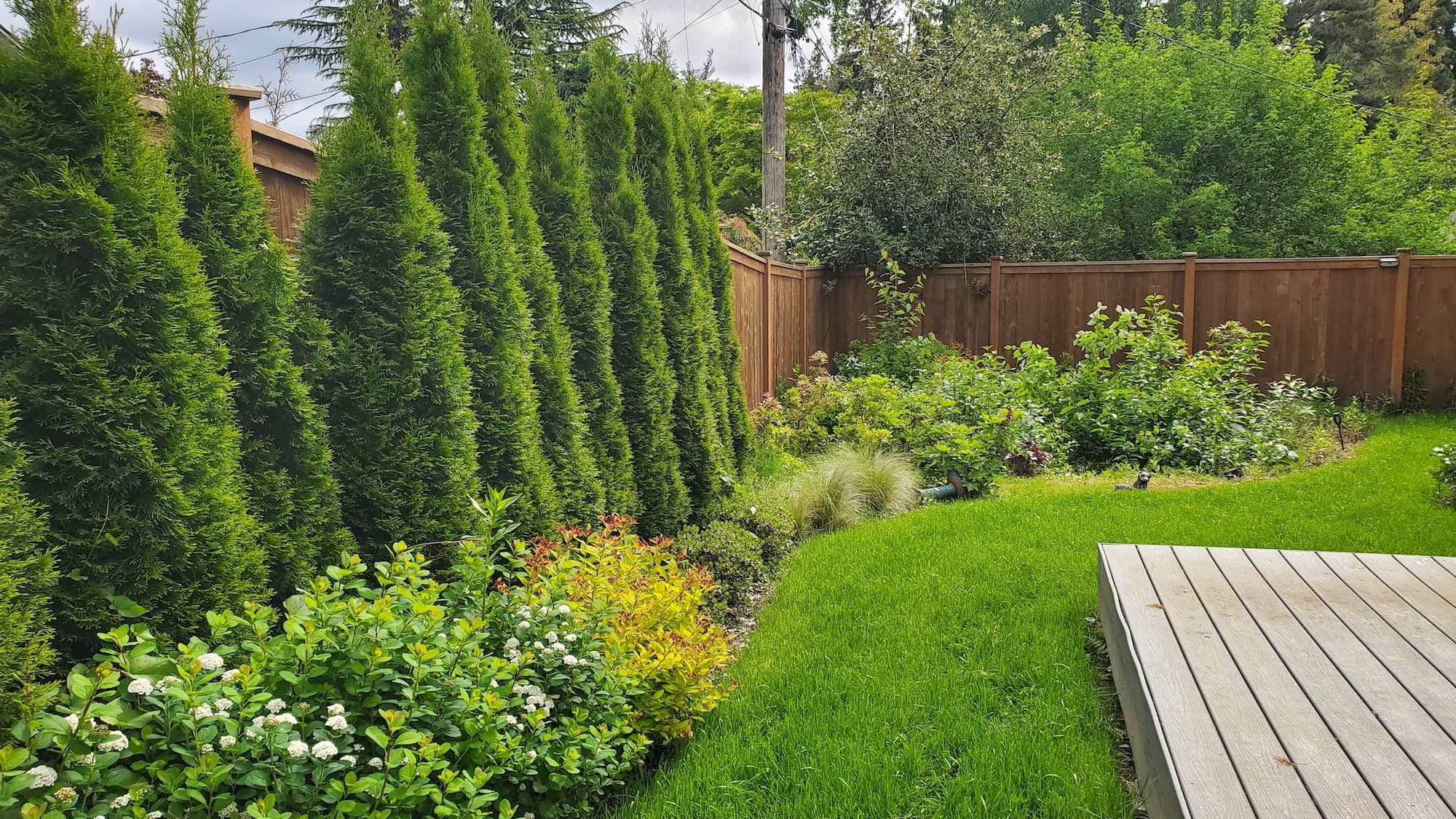West Seattle Brush Cutting — Steep Slopes
Homeowner’s Issue
Steep slopes in West Seattle present a specific, recurring set of problems: heavy winter rains, shallow glacial soils mixed with compacted loam, and decades of invasive ivy and Himalayan blackberry making erosion and access worse. Many properties above Alki or bordering Lincoln Park have southwest-facing banks that bake in summer and stay mossy and shaded through winter in the ravines. That mix—wet winters, a short dry season, and root systems tangled with invasive vines—creates slip hazards, hidden debris, and eyesores that escalate maintenance costs.
HOAs and neighbors expect tidy slopes because unmanaged brush spreads seed downhill fast and creates wildfire fuel in unusually dry summers. Drainage around old retaining walls and gullies often fails if brambles and thickets are left to root, sending sediment into sidewalks and storm drains. Curb appeal suffers, and routine mowing is impossible on the grades that matter. Our work focuses on stabilizing those slopes with plant choices and mulches appropriate for Seattle’s rainfall pattern, reducing future work and keeping properties safe and compliant with neighborhood standards.
Our Quality Service
We clear and shape steep banks using sustainable, hand-first methods—no herbicides, ever. We combine brush saws, hand pruners, chainsaw work where needed, and rope/harness systems for steep faces to protect crews and landscape. Typical jobs complete in half a day to two days depending on slope length and access. For larger ravines or multi-tiered slopes we schedule a site visit and plan a phased approach.
Local insight: West Seattle soils respond well to deep mulch and native groundcovers; compaction is common so we amend pocket soils when planting. We time heavier cuts to late spring to avoid nesting birds and do most hauling on dry days to avoid rutting. Benefits include reduced erosion, improved sight lines and safety, lower ongoing maintenance, and a clean, sustainable finish that holds up through Seattle’s rainy months.
What’s Included
- Site assessment and slope safety plan
- Manual and mechanical brush cutting (hand tools, brush saws)
- Removal of invasive vines (ivy, blackberry) by hand
- Mulch application and erosion-control mulching on exposed soil
- Haul-away or green-bin disposal (choose your preference)
- Recommendations for native groundcovers and planting layout
- Photo documentation before/after and follow-up care notes
Options / Upgrades:
- Mulch + landscape fabric under pathways (where appropriate)
- Native replanting (low-water, shallow-root species)
- Soil amendment pockets for planting stations
- Long-term maintenance plan (quarterly or bi-monthly)
Before & After / Expectations
Expect noise, some dirt, and piles of cut material on site during the work window. Steep cuts can create a temporary visual “bare” slope until mulch and plantings are in place; we prioritize erosion control first so exposed soil doesn’t wash away. Typical cleanup includes hauling to a transfer station or splitting green waste into city bins—let us know your preference.
Timelines: single small slope — half day; medium job — 1 day; complex multi-tier slope — 1–3 days with staged visits. If access is narrow or requires hauling by hand, add modest time. Aftercare tips for West Seattle: water new plantings lightly during July–August dry spells, inspect for blackberry re-sprouts in spring, and clear storm-drain gutters after major rains. Moss and ivy are persistent—plan on follow-up visits to keep regrowth manageable.
FAQs
Q: Do you use herbicides to remove ivy and blackberry?
A: No. We remove invasives by hand and with mechanical cutting only—no herbicides used.Q: How quickly will erosion stop after you cut the slope?
A: Immediate reduction in wind and water drag occurs with proper mulching; visible stabilization typically follows within one wet season when mulch and groundcover are established.Q: Do you need driveway or street access for trucks?
A: Yes—truck or trailer access speeds work. For very steep or narrow sites we use hand-haul and small trailers; we’ll advise during the estimate.Q: When is best time to schedule work in West Seattle?
A: Late spring to early summer avoids heavy rains and nesting season while allowing quick establishment before the dry summer.
Call to Action
West Seattle homeowners: if your slope is spilling onto the sidewalk, creating hazards, or just looks out of control, book a free estimate. We schedule quickly, work sustainably (no herbicides), and recommend long-term fixes that actually reduce repeat visits. Email neatandtidyseattle@gmail.com or call 206-538-9344 for same-week availability. Licensed • Bonded • Insured










